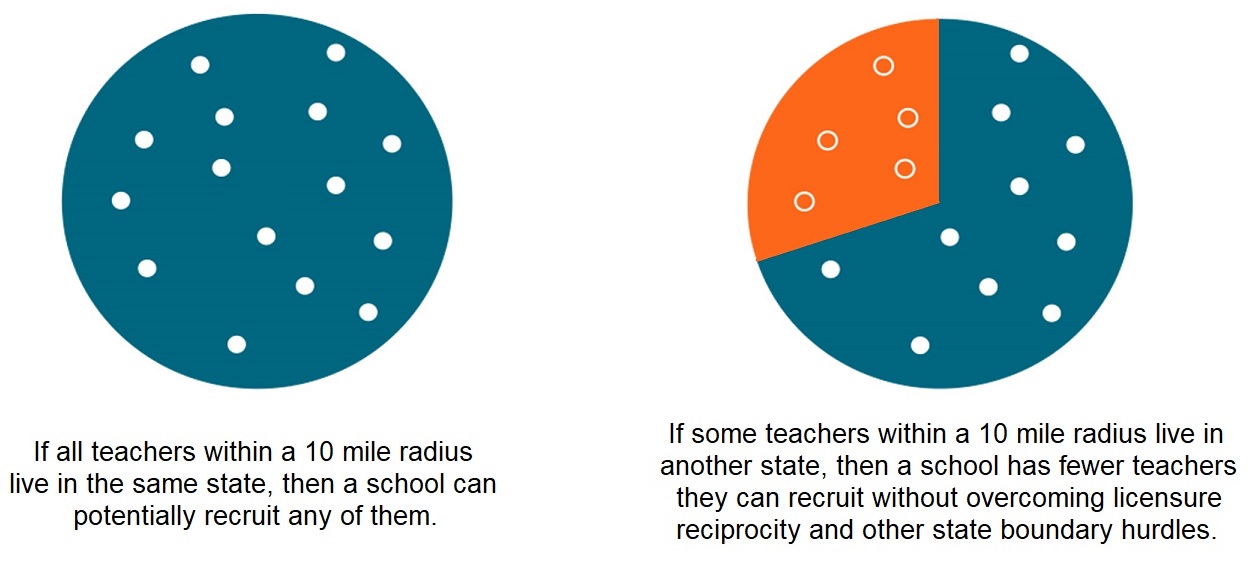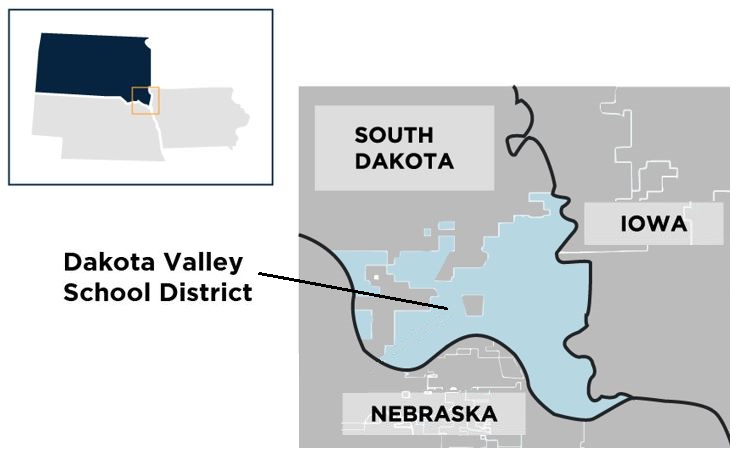Despite how some organizations tend to discuss teacher supply, the United States doesn’t have just one teacher labor market, but at least 50. Why is the labor market so fragmented? Each state creates its own teacher licensure policies and none of them employ a practical approach to licensure reciprocity. The result is a complex and expensive process for teachers who want to teach in another state. Couple this obstacle with inflexible pension systems and, voila, each state has its own labor market.
In that vein, a group of economists at the University of Missouri set out to learn how these ‘walls’ between states impact student achievement. To investigate, Dongwoo Kim, Cory Koedel, Shawn Ni, and Michael Podgursky devised a clever study comparing student achievement at schools that are within a few miles of a state border to schools that are not near state borders.
Why would that be telling? We know from previous research that teachers like to work close to where they live, so if various state policies make it difficult for teachers to move across state lines, those schools close to state lines would in theory have a smaller pool of teachers from which to recruit. This, in turn, might decrease teacher quality in those schools.

The results of this study prove the hypothesis correct. Using a 10-mile radius as each school’s prime hiring market, the researchers determined that in schools where at least 25 percent of the potential teacher workforce lived across state lines, 8th grade math achievement was lower compared to that in schools that had access to all of the potential teacher workforce within 10 miles.
The authors note that although the effect is relatively small, there are over 600 schools that reside near state borders, thereby impacting the achievement levels of 670,000 students across the country.
One can imagine that in places like Dakota Valley School District, bordered by districts in Nebraska and Iowa, easier licensure reciprocity could be a big boon to teacher recruitment efforts.

One step states can take to ensure that students near the border don’t miss out on the best teachers is to offer a standard teaching license to certified teachers from out of state–taking some of the border walls down.
More like this

Trained but sidelined: how schools are missing out on mid-career teachers

Teacher Apprenticeships: Long on possibility, short on details (for now)

Forging a path to a better place: A look back at the most widely read Teacher Quality Bulletin posts of 2022

